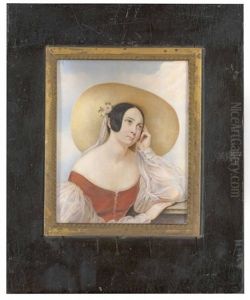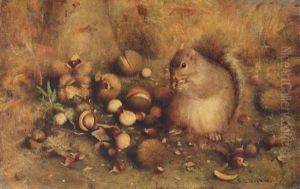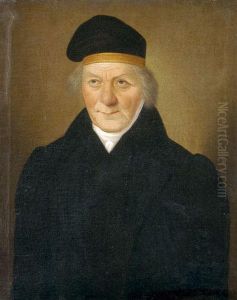Johann Stephan Decker Paintings
Johann Stephan Decker was a German-Austrian painter born on January 1, 1783, in Colmar, then part of the Holy Roman Empire. He is most renowned for his portraits, capturing the European aristocracy of his time, including significant figures such as Emperor Francis I of Austria and various members of the imperial family. Decker's artistic journey began in his hometown, but his ambition and talent soon led him to seek broader horizons.
Decker's early exposure to art came through local influences, but his style and technique evolved significantly as he traveled. He studied in Paris, a center for art and culture, where he was influenced by the Neoclassical movement, popular in the late 18th and early 19th centuries. However, Decker's work also exhibited characteristics of Romanticism, with its emphasis on emotion and individualism, reflecting the transitional period of European art in which he lived.
In 1818, Decker moved to Vienna, where he quickly established himself as a court painter. His ability to capture the likeness and personality of his subjects with sensitivity and detail earned him the patronage of the Austrian imperial family. Decker's portraits are noted for their elegance and realism, characteristics that made them highly sought after by the European elite. Beyond portraits, he also engaged in religious and allegorical themes, showcasing his versatility as an artist.
Decker's contribution to art extends beyond his paintings. He was involved in the development of lithography in Austria, contributing to the spread of this new form of printmaking. This involvement underscores his interest in the technical aspects of art and his willingness to explore new methods.
Johann Stephan Decker passed away on November 12, 1844, in Vienna. His legacy is preserved in the portraits that capture an era of European history, offering insights into the personalities and fashions of the time. Decker's work remains of interest to art historians and collectors, symbolizing the elegance and cultural richness of the early 19th century.


